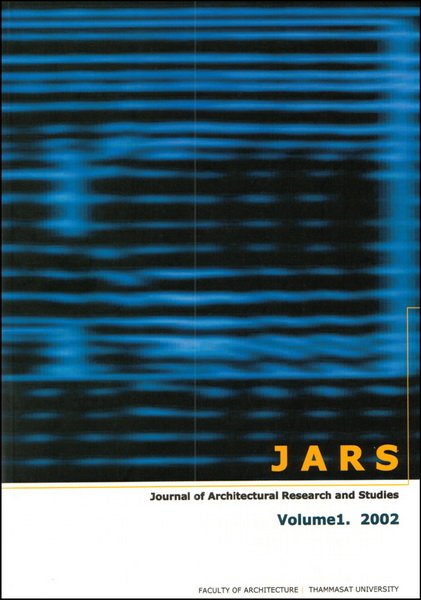Positioning: How to Be Seen and Known
Main Article Content
Abstract
In today’s business, political, and academic situations, people often misunderstand the role of communication. There are many forms of media and advertising. We, architects, architectural companies, or schools of architecture, need to think about how to be seen and known in an over-communicated society and marketplace. We need to create a “position” in the prospect’s mind to grip with the problems of communicating. “Positioning” is all about understanding the psychology of the mind and how we can manipulate perceptions to make whatever we are selling more attractive and unique. It is how we differentiate our product in the minds of our customers and prospects. It is not too hard to get into the mind. The answer is to be the first. If we cannot be the first, we need to find a way to cope with the product or the person who did get there first. Then, we must find the way to maintain leadership by searching for what we do not need and what we do need to do. Also, there are many strategies for staying on the top such as covering all bets, understanding the power of product, establishing multibrands, etc. Nevertheless, the truth is that if we cannot get to the top rung, we should have to admit and we subsequently have to let it go. Then, if we cannot be a leader, how can we position ourselves as a follower. It’s different between being a leader and being a follower. There are many ways to find specific positions not being occupied by anyone else such as size, price strategies, or technology. Finally, how can we play the positioning game; it needs to be carefully justified. To be successful at positioning, we must have the right mental attitude. We need to become an outside-in thinker rather than an inside-out thinker, which requires patience, courage, and strength of character.
Downloads
Article Details

This work is licensed under a Creative Commons Attribution-NonCommercial-NoDerivatives 4.0 International License.
All material is licensed under the terms of the Creative Commons Attribution 4.0 International (CC-BY-NC-ND 4.0) License, unless otherwise stated. As such, authors are free to share, copy, and redistribute the material in any medium or format. The authors must give appropriate credit, provide a link to the license, and indicate if changes were made. The authors may do so in any reasonable manner, but not in any way that suggests the licensor endorses you or your use. The authors may not use the material for commercial purposes. If the authors remix, transform, or build upon the material, they may not distribute the modified material, unless permission is obtained from JARS. Final, accepted versions of the paper may be posted on third party repositories, provided appropriate acknowledgement to the original source is clearly noted.
References
Maruin, T., & Isabelle, H. (1986). Architecture: From prehistory to post-modernism/the western tradition. New Jersey: Prentice Hall and Harry N. Abrams, Inc., 531-533.
AI, R., & Jack, T. (2001). Positioning: The battle for your mind. New York: McGraw-Hill, 1-4.
Jack, T., & Steve, R. (2001). Differentiate or die. New York: John Wiley & Sons, Inc., 117-132. [4] AI, R., & Jack, T. (2001), 43-60.
William, E. H., & Jonathan, M. (2000). The entrepreneur: 21 golden rules for the global manager. Singapore: John Wiley & Sons (Asia), 101 – 110.
Jack, T., Steve, R. (2001). Differentiate or die. New York: John Wiley & Sons, Inc., 259 – 298.
นิธินา ศรีประเสริฐ. (2544). Strategy + marketing for entrepreneurs.กรุงเทพฯ: บริษัททิปปิ้งพอยท์ จํากัด, 132-140.
AI, R., & Jack, T., (1993). The 22 immutable laws of marketing.New York: McGraw-Hill, 84 – 101, 180-187.
AI, R., & Jack, T. (1993), 48-59.
นิธินา ศรีประเสริฐ, 183-191.
AI, R., & Jack, T. (1993), 180-187.
AI, R., & Jack, T. (2001), 201-210.
AI, R., & Jack, T. (2001), 1-9.
AI, R., & Jack, T. (2000). Focus: The future of tour company depends on if. New York: McGraw-Hill, 1-3.


